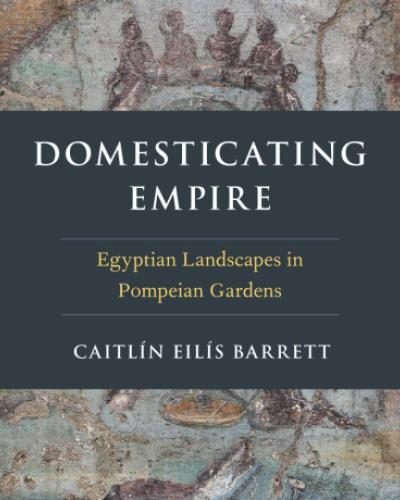 Department Homepage
The College of Arts & Sciences
Department Homepage
The College of Arts & Sciences

Domesticating Empire: Egyptian Landscapes in Pompeian Gardens
This book is the first contextually oriented monograph on Egyptian imagery from Roman households. The author uses case studies from Flavian Pompeii to investigate the close association between representations of Egypt and a particular type of Roman household space: domestic gardens. Through paintings and mosaics depicting the Nile, canals that turned the garden itself into a model “Nile,” and statuary depicting Egyptian gods, animals, and individuals, many gardens in Pompeii confronted ancient visitors with images of (a Roman vision of) Egypt. Simultaneously far away and familiar, these imagined landscapes transformed domestic space into a microcosm of empire. In contrast to older interpretations that connect Roman “Aegyptiaca” to the worship of Egyptian gods or the problematic concept of “Egyptomania,” a contextual analysis of these garden assemblages suggests new possibilities for meaning. In Pompeian houses, Egyptian and Egyptian-looking objects and images interacted with their settings to construct complex entanglements of “foreign” and “familiar,” “self” and “other.” Representations of Egyptian landscapes in domestic gardens enabled individuals to present themselves as cosmopolitan, sophisticated citizens of empire. Yet at the same time, household material culture also exerted an agency of its own: domesticizing, familiarizing, and “Romanizing” once-foreign images and objects. That which was once alien and potentially dangerous was now part of the domus itself, increasingly incorporated into cultural constructions of what it meant to be “Roman.” Through participatory multimedia assemblages evoking landscapes both local and international, the houses examined in this book made the breadth of empire compatible with the familiarity of home. (Oxford University Press, 2019)
Domesticating Empire: Egyptian Landscapes in Pompeian Gardens